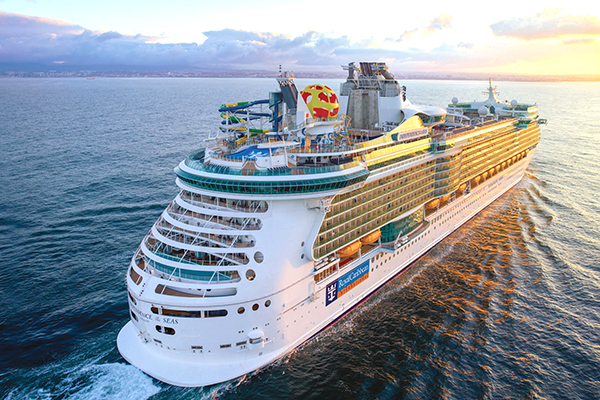
February 12, 2021
Many types of travel have collapsed during the coronavirus pandemic, but no sector has been hit harder than cruise lines. The industry suffered a public relations calamity when the virus exploded last February on big ships like the Diamond Princess, spurring ports to turn others away out of fear that passengers might transmit it.
Between March 1 and July 10, the Centers for Disease Control and Prevention (CDC) discovered nearly 3,000 cases of COVID-19 or suspected COVID-19 and 34 deaths across 123 ships.
But at some point in 2021, cruising is poised to return. The CDC lifted its no-sail order in October, laying out new guidelines for big-ship cruising to resume operations in U.S. waters. The new Framework for Conditional Sailing Order applies to ships carrying at least 250 people, including crew, and requires cruise lines to demonstrate their infection control measures as well as run simulated voyages without paying passengers. (Cruise lines have been swamped with volunteers hoping to come aboard on those test cruises.)
As a consequence, the big lines have pushed their tentative restart dates into the spring; Royal Caribbean says it won’t sail until May. Norwegian Cruise Line has canceled all sailings through March 31.

The Cruise Lines International Association (CLIA), which represents 95 percent of the industry, said its members will return “when the time is right, and that timing will be based on a number of factors, including, most importantly, input from scientists and medical experts.”
The companies are booking cruises departing later in the year. For instance, you can book a three-day voyage to the Bahamas with Norwegian Cruise Line that departs Miami on July 30, starting at $1,054.33 for a couple, including taxes and fees. Note, though, that due to COVID-19, the State Department has a Reconsider Travel advisory for the Bahamas — and the country is requiring visitors to provide evidence of a negative COVID-19 test and apply for a Bahamas health travel visa. It’s an example of how passengers and cruise lines will need to stay up on different countries’ COVID-19-related requirements, depending on their ports of call.
Here are just a few ways cruising — when it comes back — will be different during the pandemic (and maybe beyond).
Shorter cruises, shipboard testing and social distancing
Under the new rules, cruises are capped at seven days. The CDC will require ships to provide rapid COVID-19 tests of passengers and crew on the days of embarkation and disembarkation.
Future travelers can also expect temperature screenings on embarkation and socially distanced seating everywhere — from dining rooms to pool decks. Holland America has said it will convert buffet restaurants to serviced ones.
“[Cruise ship] travelers like that there’s a certain ease of travel and a lively party atmosphere,” says Jeff Gurtman, managing director of the Coyle Hospitality Group, which has consulted with many cruise lines, including Carnival and Princess. “Cruise lines will have to deal with how to ensure safe distancing” while providing that feeling of fun.
Read the full article at https://www.aarp.org/travel/vacation-ideas/cruises/info-2020/cruise-status-during-pandemic.html?CMP=EMC-CSN-DIS-ACQ-TRVL-TRAVEL_PRESIDENTSDAY_T1-1083604-1420501-02112021_CruiseQuestions_LNK_Travel-5226370-&encparam=nLXLSWBP8MxL59tAVK2AtRbGWbyiHnDUnsrCNYDY+lM=

